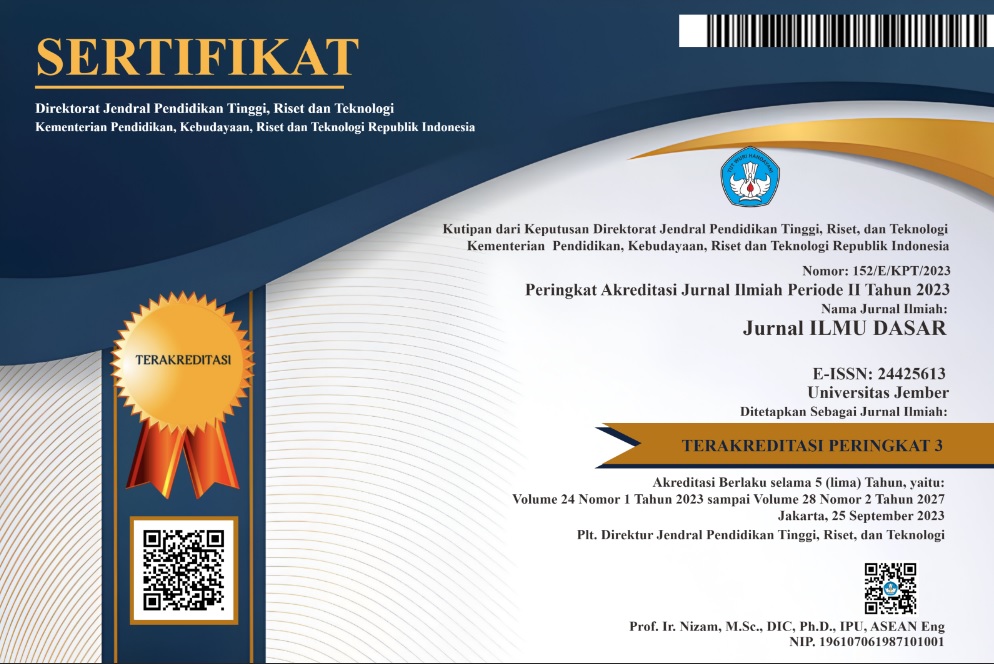The Dynamic Population of the Bacterial Hydrocarbonoclastic Concorsium in the Crude Oil Sludge Degradation
Abstract
Experiment in laboratory scale has been carried out to study population dynamic of the bacterial hydrocarbonoclastic consorsium in the crude oil sludge degradation being mixed with NPK fertilizer as nitrogen resources. Aerobic test was carried out by putting erlenmeyers in a shaker incubator, 120 rpm shaking speed, at 50°C temperature. During15 days in laboratory scale observation showed that the consortium has the potential to grow up to 50% (v/v) sludge oil load. Maximum growth and maximum growth rate of the consortium in liquid media occurred in the III C treatment (by adding 50% (v/v) sludge oil and by mixing nitrogen in the form of NPK fertilizer amounting 30% (w/v) of added substrat. At the end of the study 7 species of bacteria were identified, 5 of them are of Bacillus sp, which are aerobical. During degradation process, consorsium growths fluctuativelly. There is spesific process to degrade complex substrat by consortium bacteria.. Specifically, this experiment informs that bacterial consortium degradator of crude oil sludge are more efective than monoculture bacterial. Crude oil consists of complex hydrocarbon, in the other hand for each spesies bacteria has spesific enzyme which work on spesific substrat. They only have limited ability. Each bacteria of its corsorsium has dominated the consorsium which is able to use hydrocarbon fraction.











